Sending 500 cold emails a week sounds impossible until you watch a high-velocity sales team actually do it. These teams operate at a completely different level, using smarter targeting, better timing, and more qualified prospects while their reps spend time having conversations instead of writing templates.
Most sales teams hit a wall around 50 outbound emails per day. The manual work becomes overwhelming, follow-ups get forgotten, prospects get lost, and response rates drop because everything starts sounding like spam. High-velocity teams solve this with platforms that automate the repetitive tasks while preserving what actually gets responses.
We’ve tested dozens of tools and found five that consistently help sales teams book more meetings and generate revenue. Here’s how the best platforms separate themselves from the rest.
- Instantly
High-velocity teams choose Instantly because it solves the two biggest problems with scaling cold email: finding qualified prospects fast and keeping messages out of spam folders. The platform’s 450 million contact database saves hours of prospecting time. Instead of buying lists from third-party vendors or manually researching leads, you can filter by specific criteria like company revenue, employee count, or recent funding rounds and launch campaigns immediately.
Once you’ve built your prospect lists, Instantly handles the technical complexity of email deliverability. The platform runs automatic email warm-up across multiple sending accounts and rotates messages to build sender reputation. For example, when you add a new domain, Instantly starts with just 2 emails on day one, then 4 on day two, gradually ramping up to your target volume over several weeks. This organic growth pattern mimics natural email behavior, so when you finally launch that 500-email campaign, the ESPs see an established sender rather than a spam account.
Key Features
- AI email writing assistant: Generate personalized messages that sound human even at high volume
- Auto-optimize A/Z test feature: Test different subject lines and messaging variants automatically (A, B, C…Z) to optimize response rates in real-time
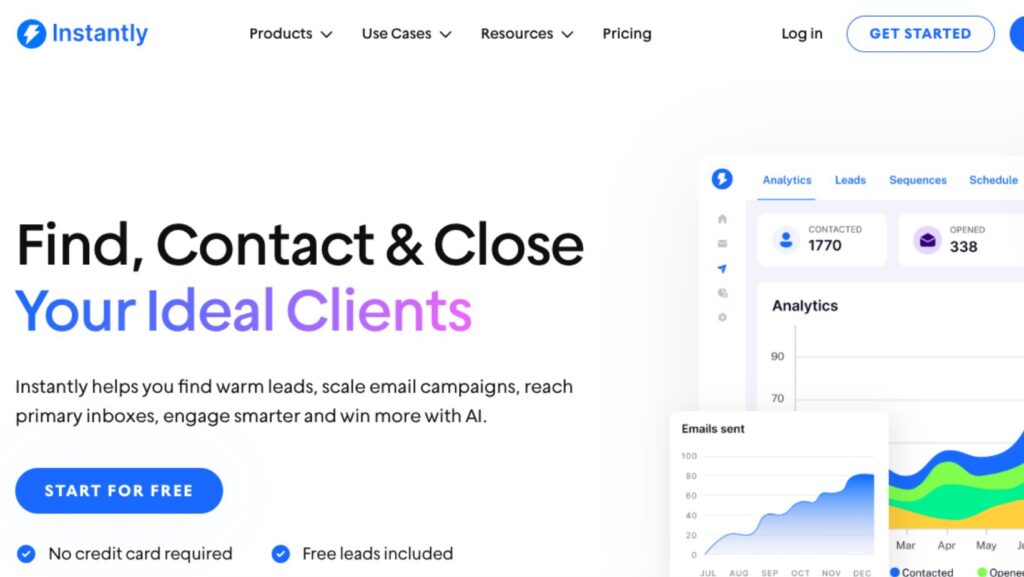
- Smart scheduling and time zones: Automatically sends emails when prospects are most likely to be checking their inbox
- Instantly Dealflow CRM: Complete sales pipeline management from first contact to closed deal
- Real-time campaign analytics: Track opens, clicks, and responses across all campaigns with detailed performance insights
- Reply.io
Reply.io automates your entire outreach process while making every message sound personal. The AI pulls in real prospect data like job changes or company expansions to craft messages that feel researched and relevant. When you’re sending hundreds of emails per week, this level of personalization would normally require a team of researchers.
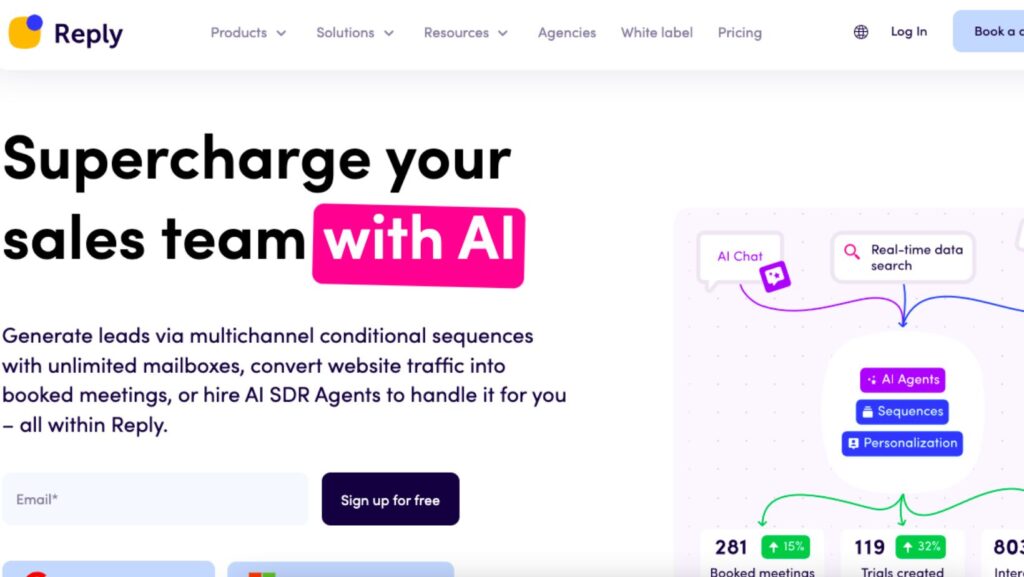
The platform automatically switches between email, LinkedIn, SMS, and phone calls based on how prospects respond. For instance, if your email gets opened but ignored, Reply.io moves to LinkedIn messaging. Or, if they engage on LinkedIn but don’t book a meeting, it triggers a phone call. This keeps every prospect moving through your funnel instead of going cold.
- Conditional sequence branching: Changes outreach channels and timing based on how prospects engage with previous messages
- AI SDR automation: Handles entire email campaigns from writing to sending while you focus on closing deals
- Native database with 1 billion contacts: Build prospect lists without switching to external data providers
- Cross-platform analytics: Track response rates and conversions across email, LinkedIn, SMS, and phone in one dashboard
- Apollo
Apollo is the best choice for teams that need context before hitting send. The platform tracks buying signals like job postings for roles that would use your product or increased website activity. So, instead of cold calling random prospects, you reach companies that are already showing signs they might need what you’re selling.
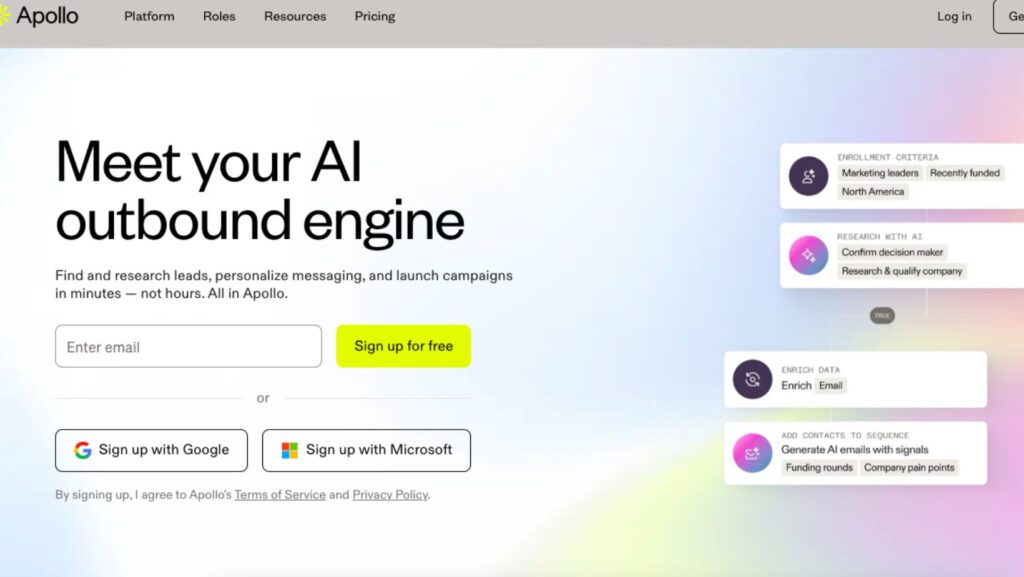
In addition to new prospect hunting, Apollo also watches your existing customers for churn risks. The platform alerts you when current clients show warning signs like decreased usage or missed meetings, then suggests specific retention strategies. For example, if a client stops attending your monthly check-ins and their team usage drops 40%, Apollo flags the account and suggests sending a personalized retention email.
- Automated lead scoring with custom criteria: Assigns points based on prospect behavior like website visits, email opens, and content downloads
- AI-powered deal risk alerts: Warns when existing customers show signs of cancellation and suggests retention strategies
- Multichannel sequence automation: Combines email, LinkedIn, and phone outreach in coordinated campaigns
- Real-time buying intent monitoring: Tracks when target companies are actively researching solutions in your category
- Mailshake
Mailshake gets your entire sales team up and running in under an hour. While other platforms require training sessions and complex setups, Mailshake’s interface is simple enough that new hires can launch their first campaign on day one. For teams that need to onboard reps quickly and start generating pipeline immediately, this ease of use becomes a competitive advantage.
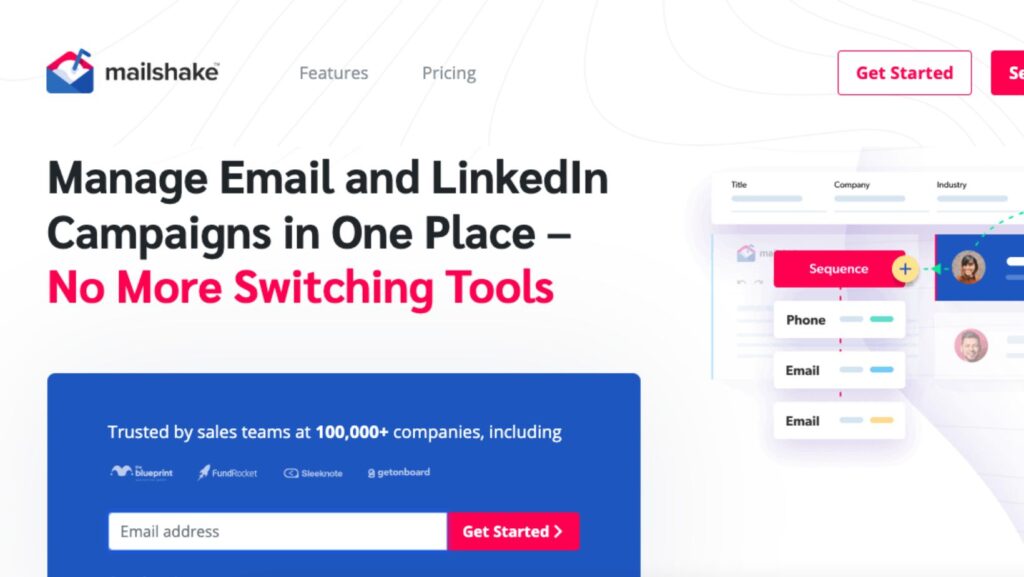
The platform’s multichannel approach works through coordinated timing rather than random touchpoints. For example, if a prospect opens your email twice but doesn’t reply, Mailshake waits three days then automatically sends a LinkedIn connection request with a personalized note referencing your previous email. This creates natural conversation flow instead of bombarding prospects across all channels simultaneously.
- Integrated phone dialer with local presence: Automatically dials prospects using local area codes to increase answer rates
- Social media research automation: Pulls prospect information from LinkedIn and Twitter to personalize outreach messages
- Campaign performance benchmarking: Compares your open and response rates against industry averages to identify improvement areas
- Team collaboration and approval workflows: Requires manager approval for campaigns before sending to maintain message quality
- Hunter
Hunter starts as an email finder, but lets you launch campaigns without leaving the platform. While most teams use separate platforms for finding contacts and sending emails, Hunter handles both in one place. Fast-moving sales operations avoid the usual workflow where you research prospects in one tool, verify emails in another, then move to a third platform to actually send messages.
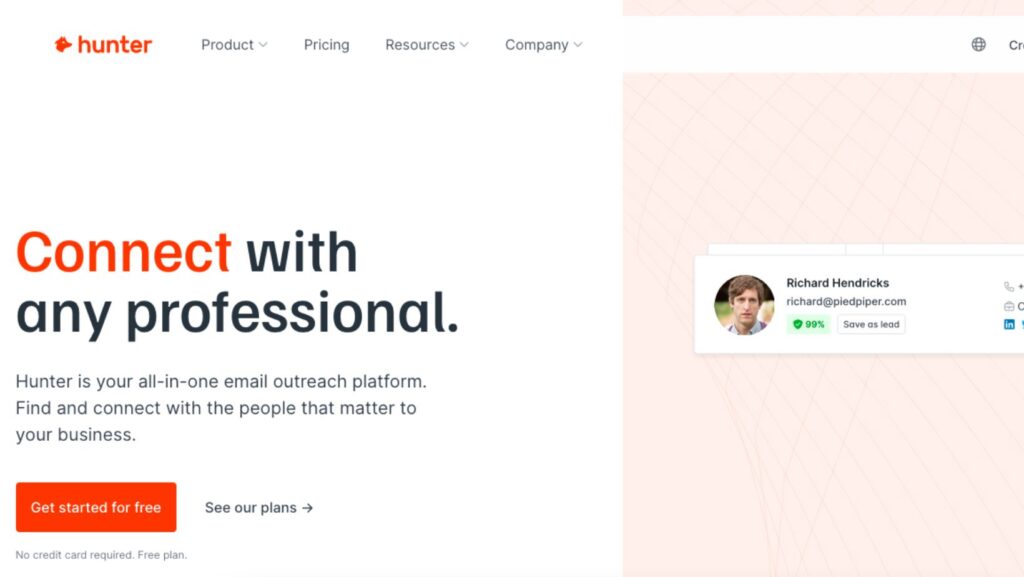
Hunter works best for teams that want email outreach without the complexity. You won’t find advanced automation or multichannel sequences here, just solid email campaigns that get the job done. This streamlined approach appeals to sales teams that prefer focusing on message quality over elaborate features, or startups that need proven results without learning complicated workflows.
- Domain-wide email discovery: Finds all public email addresses associated with any company domain in seconds
- Real-time email verification API: Checks email validity instantly to maintain list quality and sender reputation
- Purchase intent monitoring: Tracks prospect behavior across the web and alerts when they show buying signals
- Chrome extension for instant lookup: Find and verify contact information directly from LinkedIn profiles or company websites
Final Thoughts
Every sales team gets excited about their new cold email platform during the first week. The real test comes in month three, when the novelty wears off and you’re left with actual results. Some teams are booking more meetings than ever, while others are still trying to figure out why their response rates tanked.
The difference usually comes down to one thing: whether the platform helped or hindered your team’s natural sales rhythm. The best tools amplify what good salespeople already do well, rather than forcing them to learn entirely new workflows. When your top performer can teach the platform to a new hire in twenty minutes, you’ve probably made the right choice.
Here’s something most comparisons won’t tell you: the platform that feels slightly boring after six months is probably working perfectly. Exciting software often means you’re spending time learning features instead of closing deals. The goal is to find something reliable enough that your team forgets it exists.



























































